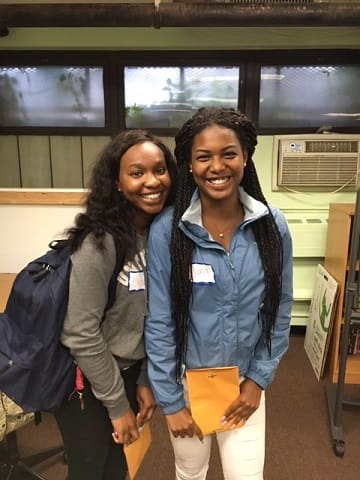
The Waltham Youth and Community Coalition, a project of the Waltham Partnership for Youth, is an entirely youth-focused coalition. Yet even within those parameters, the organization decided to form a subgroup of youth called the Waltham Trailblazers.
“The Coalition always has wanted to understand what youth were going through,” explains Shanesha Christmas, the Trailblazers’ advisor and an active member of the coalition through her job as Prevention Specialist/Community Organizer at the Wayside Youth and Family Network. “Yet we didn’t want to simply make assumptions. We wanted to hear from the youth themselves.”
One of the first tasks of the Waltham Trailblazers was to develop a mission statement which reflected who they were and what they hoped to accomplish. They came up with: to empower people to prevent substance misuse, eliminate discrimination, and promote diversity in the Waltham community.
Waltham is a city of about 61,000, located 12 miles outside of Boston. The Waltham Trailblazers was formed in January 2016, and is currently composed of 18 Waltham High School students from grades 9-12. They are a diverse group in age, race, and ethnicity. Based on their experience about what is going on in the community, the group’s top priorities are:
- Alcohol and drug misuse
- Tobacco misuse
- Diversity
- Bullying, belittling, and racial issues
At CADCA’s 2016 Mid-Year Training Institute this summer, two Trailblazers and an adult advisor participated in the Medicine Safety Youth Educators Pilot Program. In this program, CADCA-trained teenagers go back to their communities and teach 5th and 6th graders about responsible over-the-counter (OTC) medicine use using the OTC Medicine Safety curriculum, developed by Scholastic and the American Association of Poison Control Centers, with support from McNeil Consumer Healthcare.
When the youth returned home from Mid-Year, they shared what they had learned with their peer Trailblazers to make sure that they understood the curriculum. They practiced role-playing, discussed and prepared activities, developed strategies for recruiting 5th and 6th graders, and planned the snacks they were going to give out at the start of each session.
The first of two teaching workshops took place the week of September 19th at the Waltham Boys and Girls Club. The second one will occur later this month.
“The youth facilitators were surprised at how short the attention span was of the 5th and 6th graders, and how, at first, the preteens didn’t take them seriously,” said Christmas. “But by the end of the five sessions, our Trailblazers knew the younger kids WERE listening and WANTED to learn!”
In order to keep the group’s attention, the youth facilitators added a few twists to the curriculum. For example, for the session about “why it was important to read the directions of medicines,” the 5th and 6th graders were handed a fake quiz when they arrived at the workshop to recap what they had already learned. Instructions at the top of the quiz said to “read all the questions before starting the quiz.” In a perfect lesson about reading directions, the last question instructed them to just turn in the paper by writing their name on it. All but one of the kids figured it out!
The two teen facilitators also presented in front of the Waltham School Committee and are planning to present before the full coalition this week. One goal is to get help and recommendations about where to present the next workshop. In addition, two other Trailblazers who sat in on the workshop will also help teach the next group of 5th and 6th graders.
“This near-peer leadership model is so powerful,” explains Kaytie Dowcett, Executive Director of Waltham Partnership for Youth. “The younger students are more likely to connect to the message if it comes from someone closer to their age, and the teens themselves become more connected to the message by virtue of their leadership status. Plus, they are learning invaluable skills, which can be applied across a wide range of situations.”
In addition to participating in the Medicine Safety Youth Educators Program, the Trailblazers are also learning the Strategic Prevention Framework (SPF), and most specifically how to create a Community Assessment Map for each of their priorities, and then how to carry this awareness into action plans for change. For example, when examining the issue of underage drinking, they are asking the questions: “Where are they seeing alcohol being consumed? What times of day? During what type of activities?”
The Trailblazers meet once-a-week for an hour and a half, and are invited to the coalition’s monthly meetings to make sure their voices are being heard.
“They are developing a sense of self-efficacy and an understanding that they can be agents of change,” added Dowcett.


